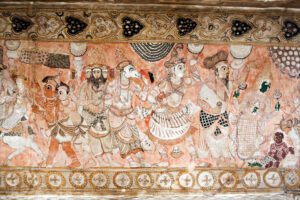Best Mural painting in history 2024
A vivid scene from Indian mythology is painted on a traditional mural. The main subject of the painting is a deity surrounded by animals and celestial beings and wearing elaborate jewelry. The background is covered in elaborate floral patterns that represent nature’s abundance. Deep reds, rich browns, and golden yellows are examples of earthy tones that are used to create a timeless look.
Delicate lines and graceful postures are used to render the figures, which exude a sense of divine beauty and tranquility. From the elaborate patterns on the deity’s garment to the expressive features of the surrounding figures, every detail is painstakingly rendered. Mural painting in history. The picture transports the observer to the ethereal realm it depicts with an air of spiritual serenity. The fusion of vibrant hues and intricate details
Mural painting in history
Painting of Ajanta Caves Mural painting in history
One of the oldest surviving wall paintings in the Indian subcontinent, the Ajanta Caves were carved out of volcanic rocks Between the 2nd and 5th centuries AD. These include a group of 29 caves which have been carved in the shape of a horseshoe. These Buddhist caves are quite popular for their beautiful wall paintings.
Mural painting in history. The walls of these caves have both wall paintings and proscenium paintings. In these tempera styles. The general themes of these paintings range from the Jataka tales to the life of the Buddha and the elaboration of flora and decorative patterns. The outline of the shapes is reddish ochre with brownish, black or dark red currants.
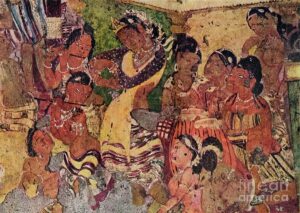
Vajrapani Manjushri and Padmapani of various Bodhisattvas in Tribhangi Mudra in Cave One.
Cave no 17 pictures of buddha, Yashodhara and Rahul.
Cave no iv Scene from shibi Jataka, where King shibi offered his own meat to save the pigeon
Cave no 5 The scene of the mother Nourished jataka where the ungrateful man saved by a deer informed the king about his whereabouts.
Native Stories
The native stories relate to the past birth of Gautama Buddha in both human and animal forms. The future Boddh king appeared as the exiled god elephant in whatever form he took.
Famous Jataka stories include a donkey in lion’s skin, a cat, a foolish timid rabbit, jackal and crow.
Ellora cave paintings Mural painting in history
Found in five caves limited to the Kailash Temple, these past paintings were constructed in two phases. The paintings of the first phase were depicted during the excavation of the caves but the second phase lasted longer.
The first depiction is of Vishnu sitting with his wife Lakshmi on the celestial bird Garuda through the cloud. The later Chittar Sairs in Gujarati style depict a procession of Shaiva sadhus. The paintings of the cave of Ellora are new compared to the Ajanta cave. Buddha Jainism and Hinduism are the depiction of all three religions.
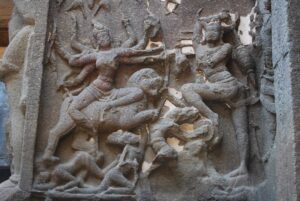
Tiger cave Painting Mural painting in history
The Bagh caves in Madhya Pradesh, which directed the expansion of Ajanta Sally, are very close to Ajanta Caves in their design, execution and decoration hand in hand with their special compositions. The outline of these is firmer and is more fire and relatively earthlier and more humane. Like Ajanta in the form of Rang Mahal, Bodha is a beautiful, pasted painting depicting Jataka stories depicting religious themes in the light of lifestyle. It is more secular in nature.
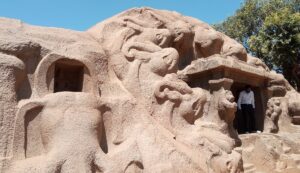
Armamalai cave painting Mural painting in history
Located in the Vellore district of Tamil Nadu, these natural caves were converted into Jain temples in the eighth century. The raw clay structures used as resting places for Jain saints are located within the cave.
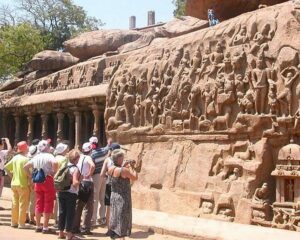
Chittanavasal cave painting Mural painting in history
The Jain Samavasarana sermon is based on the hole made by cutting rocks located in Tamil Nadu until the tenth century AD. Paintings exist not only on the walls but also on the ceilings and pillars. When Rajamahendravarman I excavated the temple, it found other qualities when the Pandey ruler renovated this temple in the seventh century.
The medium used is a done and mineral pigments and was made by pouring paint to the surface of new thin wet lime plaster. Green, Yellow, Orange, Blue, Black and White, General Colors: The central element of the paintings in Chita Vansal is a pond filled with lotuses. Ducks, swans, fishes and animals are depicted, this scene illustrates Samavasarana, which is an important scene in the Dharma Jain.
Samavasarana is a special beautiful assembly hall where sermons were given by the Tirthankaras after attaining enlightenment, bulls, elephants, now inns and gods were present in this meeting hall as a witness to this magnificent scene.
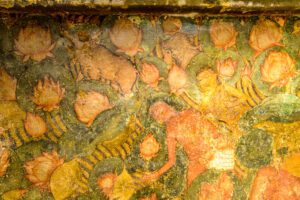
Ravana Chhaya shell shelter Mural painting in history
Built on a rocky retreat in Odisha’s Keonjhar and district, this ancient fantasy is in the shape of an open umbrella. The remains of Chola painting belonging to the 11th century are also important.
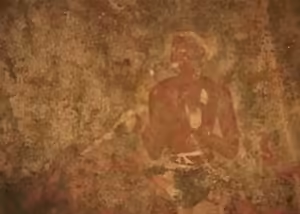
Lepakshi Temple Painting Mural painting in history
Located in the Anantapur district of Andhra Pradesh in the 16th century, these paintings were depicted on the walls of the Lepakshi Veerabhadra Temple. Despite being built during the Vijayanagar period, they talk about religious themes, which are based on the Ramayana, the Mahabharata and the incarnation of Vishnu. These paintings show a prior absence of primary colors, especially blue, at the level of quality the painting appears to have a decline. Details of the forms, shapes and costumes were underlined in black.
Jogimara cave painting Mural painting in history
This artificially carved cave is located in the Surgujia district of Chhattisgarh. It is 1000 to 300 BC old and inscriptions of some painters and love stories have been found in Brahmi script. The cave is believed to be attached to the amphitheater and paintings were constructed to decorate the hall, it depicts the life of leadership couples, elephants and fish animals. The rock -cut theatre of Sita Banga is also located nearby. Ral painting

Badami cave temple, Karnataka Mural painting in history
The Badami cave temple is famous for its sculptures, but these also have beautiful paintings, the original grandeur and charm of the paintings within the Badami caves are lost, providing another glimpse of the artistic disabilities of the people of that era.
Among them, human figures are in a sense of grace and kindness and match the tradition of Ajanta and tiger. The renunciation of worldly life by Jain saints, Shiva and Parvati mythological have been depicted, this cave is already built, in which Chaturbhuja sees Brahma sitting on his swan.

conclusion
An ancient and culturally significant art form, mural painting captures a society’s visual history and traditions on walls and ceilings. Mural painting in history. For centuries, it has adorned temples, palaces, and public buildings, narrating tales of everyday life, spiritual beliefs, and mythology. A mural must be painted with patience, skill, and an awareness of the surrounding environment in order for the piece to endure and complement the architecture.
Mural painting in history. In addition to adding to a space’s aesthetic appeal, murals preserve civilizations’ values, traditions, and creative expressions by acting as historical documents. Mural painting is still very much in vogue in the modern era, incorporating new techniques and aesthetics while staying true to its original intent of inspiring, educating, and reflecting a community’s cultural identity.

